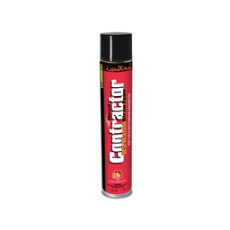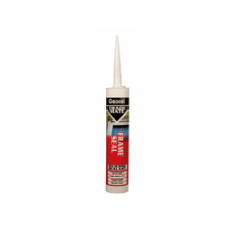Check local branch stock
-
![Euroscrim.jpg.jpeg Euroscrim.jpg.jpeg]()
Everbuild Euroscrim Scrim Tape 48mm x 90m (484687)
Euroscrim is a premium quality scrim tape that is made in Europe. It is quick and easy to apply, with it being self-adhesive. It's flexible and won't cause bubbles or blisters and can be used for drywall, plaster walls and coatings. -
![Value%20Masking%20Tape.jpg.jpeg Value%20Masking%20Tape.jpg.jpeg]()
Everbuild General Purpose Masking Tape 25mm x 50m
This tape is a general-purpose masking tape from Everbuild that is easy to tear, residue-free, and ideal for many uses such as paint masking. Available in a range of widths so you can use the right product for your project.
Sealants & Adhesives
Expanding foam can expand up to twice its original size, so it can be used to fix most holes, both big and small. It can also conveniently be used on most surfaces, including wood, glass, masonry and metal. Multi-purpose fillers repair internal and external cracks and joints, and can be sanded down, stained, painted and varnished as required.
Frequently Asked Questions
How to use silicone sealant?
To use silicone sealant, prepare the area that needs to be sealed, apply the sealant, smooth the sealant, and then leave it to dry.
How much tile adhesive do I need?
You will need 1.8kgs per 1mm depth per m2.
How to mix grout?
To mix grout, add water to the grouting powder in the manufacturer-recommend ratio. Tilt mixing bucket and stir with a grout-mixing knife. Then, adjust grout consistency by adding more powder or water. Let the grout rest for up to 10 minutes before using a grout knife to mix thoroughly once more.
How to use wood filler on a door frame?
To use wood filler on a door frame, start off by scraping out any flaking and splinters of paint from the damaged parts by using a wire brush. Then, it is important to soften or mix the filler as per instructions. It could involve stirring to the point of hardening, kneading until it softens, or mixing different substances until you get a similar colour. At this point, apply the ready filler on a putty knife. You will then scrape it onto the frame’s damaged area. After you’ve done that, allow a reasonable time for the filler to dry.
How to use expanding foam?
To use expanding foam, first clean the area, removing any debris and dirt to ensure there will be no contaminants. Put on disposable gloves to ensure you stay as safe as possible (as expanding foam can burn and will stick to your skin if it gets on you), prepare the can by removing the top and screwing in the applicator nozzle onto the valve, making sure not to use too much. Then, finally, shake the can well and then insert the nozzle into the hole you wish to fill, holding the can upside down for the best application. Make sure to leave the foam to set, which will take between 30 minutes and 12 hours depending on the amount of foam you’ve used. Once the foam has dried, you can cut and sand it down to the desired fit.






